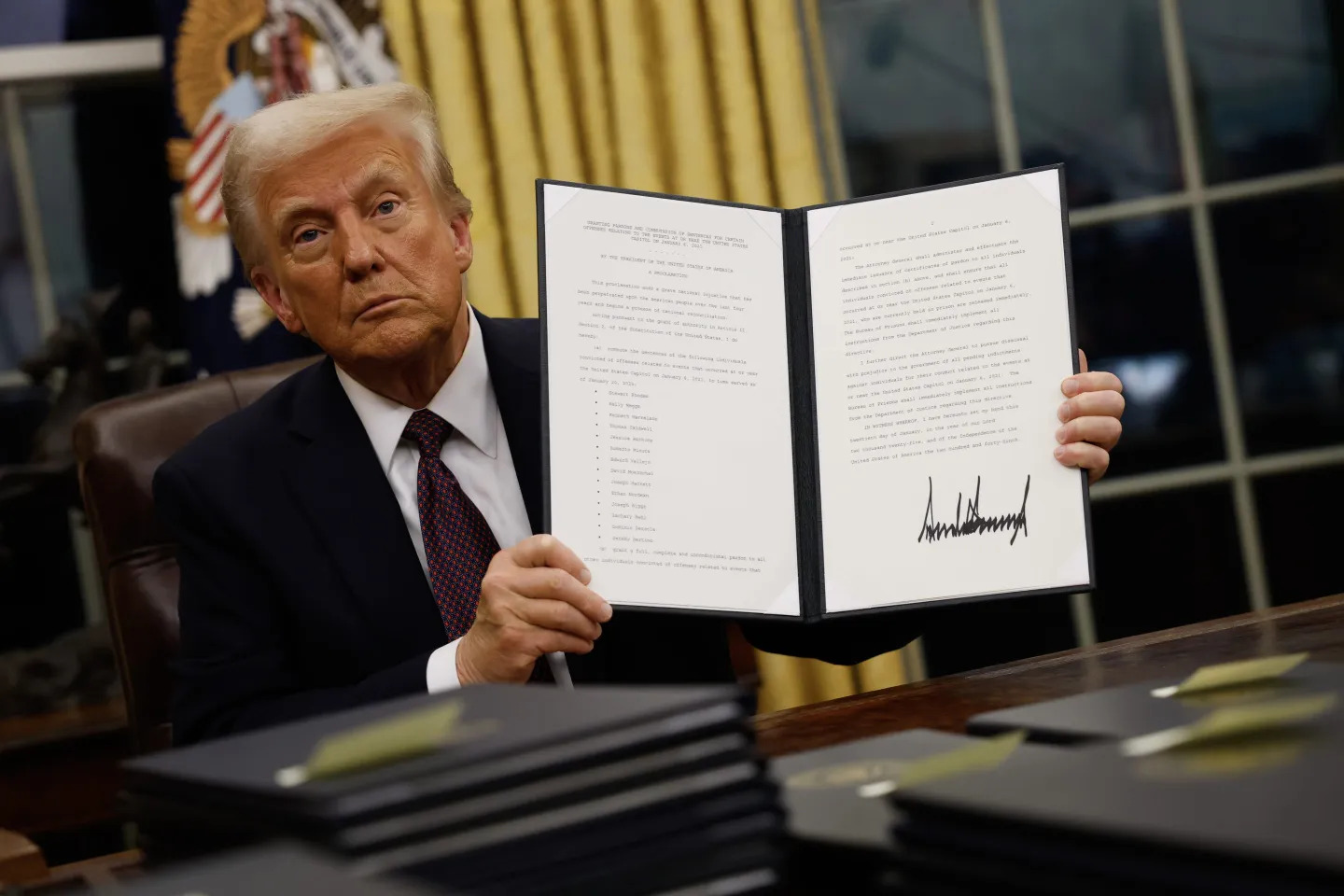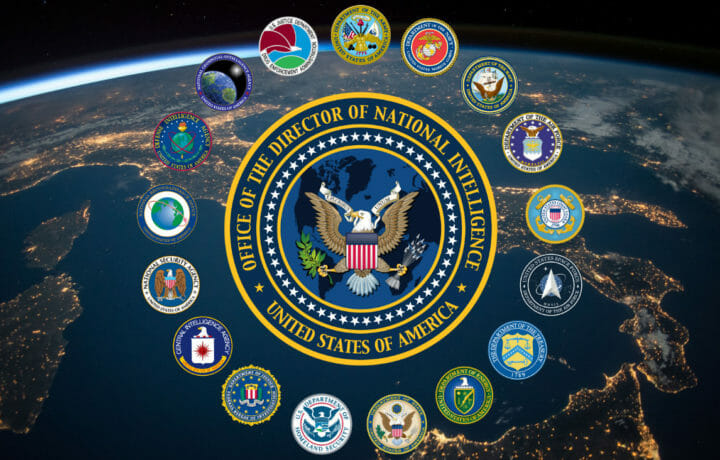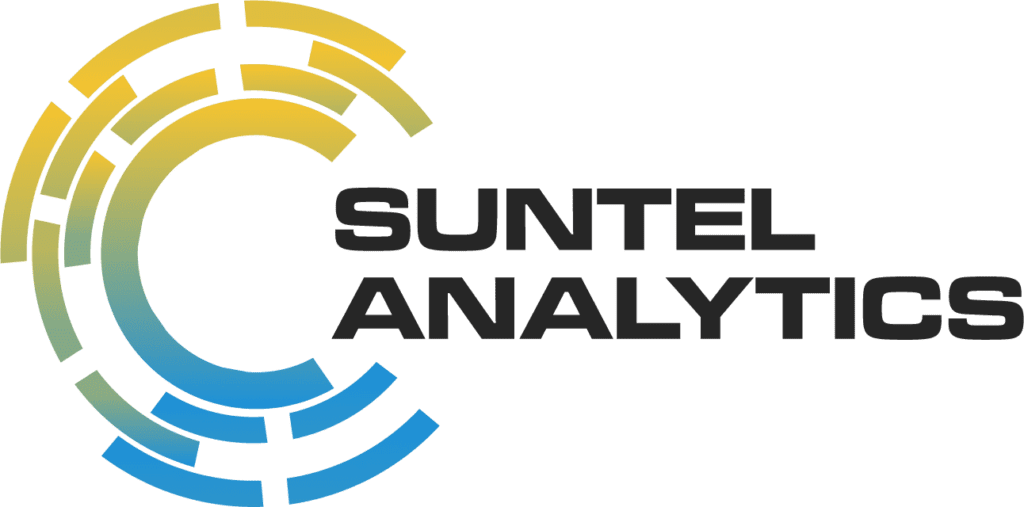The Central Intelligence Agency (CIA), as the premier foreign intelligence service of the United States, occupies a critical position in safeguarding national security and informing foreign policy. When news breaks of the CIA offering employee buyouts—whether through Voluntary Early Retirement Authority (VERA) or voluntary resignation incentives—it inevitably raises pressing questions about the agency’s operational effectiveness, the future of intelligence gathering, and the broader implications for U.S. national security.
In recent years, the Trump administration embarked on a large-scale effort to streamline the federal government, proposing various restructuring initiatives across multiple agencies. Within the intelligence community (IC), these changes can reverberate more sharply. Intelligence work is inherently specialized, and workforce reshaping has historically proven risky if not executed with surgical precision. Indeed, the CIA’s buyout offers have generated debate among policymakers, intelligence professionals, and the broader public concerned with ensuring America’s continued strategic advantage.
This article provides a comprehensive look at CIA employee buyouts in the context of broader federal downsizing, examining how these programs might affect the CIA’s human intelligence (HUMINT) capabilities, the intelligence community at large, and U.S. national security interests. Drawing on credible sources, historical precedents, and expert analyses, we will delve into the rationale behind these buyouts, their potential risks, and strategies for mitigating negative outcomes.
Overview of the CIA Buyout Program

Voluntary Early Retirement Authority (VERA)
According to the Office of Personnel Management (OPM), VERA is a restructuring tool that federal agencies may use to temporarily lower the age and service requirements for employees to retire early. This is typically authorized when agencies are reorganizing, downsizing, or making structural changes that could potentially lead to workforce imbalances. By offering early retirement incentives, agencies aim to reduce the impact of involuntary separations and maintain some control over the reshaping process.
Within the CIA, VERA is used selectively. Not every CIA employee is automatically eligible; criteria are carefully set to preserve the agency’s most indispensable skill sets. For example, intelligence officers who are experts in high-demand foreign languages (e.g., Mandarin, Russian, Farsi) or have years of successful covert field experience are less likely to be offered these incentives.
Voluntary Resignation Incentives
In addition to VERA, the CIA offers voluntary resignation incentives—commonly referred to as “buyouts”—which often come with a cash payment. The goal is to encourage employees to leave on their own accord, sparing the agency from having to conduct Reduction in Force (RIF) actions that can hurt morale and create public controversy.
According to the Government Accountability Office (GAO), buyouts have long been a tool in federal workforce management, dating back to the 1990s. However, intelligence agencies apply stricter criteria to protect mission-critical capabilities. In theory, those with the most specialized skills will not be offered these incentives. In practice, however, the interdependencies within intelligence missions can make it challenging to predict how workforce reductions will ripple through the CIA’s operational and analytical branches.
Selectivity Based on Mission Requirements
One distinguishing feature of the CIA buyout program is its selective nature. Employees undergo a vetting process that involves their supervisors, career development officers, and senior leadership. The Agency must ensure it does not inadvertently lose expertise in areas such as:
- Cybersecurity, where technical know-how is essential in countering digital threats.
- Counterterrorism, which still requires robust knowledge of terrorist networks, ideologies, and modus operandi.
- Geopolitical Analysis, including deep regional knowledge in hotspots like the Middle East, East Asia, and Eastern Europe.
Despite these precautions, critics question whether the Agency can truly gauge the long-term impact of losing employees who might be peripheral now but indispensable in future crises.
Government-Wide Restructuring Efforts and the CIA

Historical Context of Federal Buyouts
Federal agencies have used buyouts numerous times to adapt to shifting budgets, mandates, and political directives. For instance, following the end of the Cold War, various defense and intelligence entities embraced early retirements to capitalize on the so-called “peace dividend.” However, as was tragically highlighted by events leading up to the September 11, 2001 attacks, precipitous downsizing can lead to intelligence gaps that are not immediately apparent but can have devastating effects over time.
According to a study by the Brookings Institution, past government-wide buyout programs often yielded short-term cost savings but also risked eroding critical capabilities. The CIA is not immune to this phenomenon. Even minor errors in selecting who leaves can compromise entire intelligence portfolios, hamper continuity, and reduce institutional memory in specialized fields like HUMINT and technical intelligence.
Creation of the Department of Government Efficiency
Under the Trump administration, there was an emphasis on government efficiency and streamlining operations across federal agencies. Media reports and various administration statements alluded to the creation of a “Department of Government Efficiency,” with billionaire entrepreneur Elon Musk frequently cited as a key advisor or figure spearheading efforts to modernize government operations.
While the actual structure and role of this department have been subject to debate—some consider it more of an advisory body or a rhetorical symbol than a fully operational department—the underlying message is clear: the administration sought to reduce bureaucratic inefficiencies and champion a leaner federal workforce.
For the CIA, these external pressures translated into real conversations about budget reallocation, reorganization, and the introduction of technology to bolster operational capacity while reducing headcount. However, this approach risks over-reliance on technology at the expense of the nuanced, people-focused dimensions of intelligence work.
Strategic Goals Behind the CIA Buyouts

Modernizing Intelligence Operations
Then-CIA Director John Ratcliffe (who served as the Director of National Intelligence, overseeing the broader IC, though sometimes referenced in the context of CIA modernization) repeatedly stated that these buyouts were part of a forward-looking approach to modernize U.S. intelligence operations. The plan involves:
- Upgrading data analytics through advanced technologies like machine learning and quantum computing.
- Enhancing cybersecurity frameworks, ensuring the Agency is equipped to handle next-generation threats.
- Restructuring internal bureaus to cut red tape and encourage cross-department collaboration.
In principle, this strategy recognizes the changing face of global threats. As cyber warfare, drone technology, and AI-driven espionage take center stage, the CIA faces new challenges that a more tech-savvy workforce could address.
Infusing New Talent and Leadership
The stated rationale for buyouts is to infuse the CIA with fresh talent—individuals who grew up in a digital environment and are naturally adept at employing technology to gather and interpret intelligence. Proponents argue that the Agency needs not just strong coding skills but also a broad range of expertise in data science, bioinformatics, and open-source intelligence (OSINT).
Furthermore, buyouts are said to create space for rising leaders to assume managerial and operational control, potentially invigorating the Agency with innovative ideas. Critics counter that leadership in intelligence is not solely about youth or novelty; it also demands a deep well of experience that only time and extensive field work can provide.
Aligning with Evolving National Security Priorities
Another central argument is that the threat environment has evolved significantly since the Cold War and even since the post-9/11 era. National security priorities increasingly emphasize:
- Great power competition (with rivals like China and Russia).
- Non-state cyber threats, including hacker collectives and transnational criminal organizations.
- Global health threats, such as pandemics and biotechnology risks.
By adjusting the Agency’s personnel mix—allowing some of the Cold War-era veterans and post-9/11 hires to depart—CIA leadership believes it can better respond to a rapidly shifting global stage. Yet the persistent danger is that removing too much seasoned talent will hollow out HUMINT capabilities at a time when traditional espionage remains critical.
National Security Implications
Potential Intelligence Gaps
Large-scale employee departures, even if voluntary, can result in intelligence gaps. This has been a recurring theme in the U.S. intelligence community whenever workforce restructuring occurs without a meticulously crafted strategy. Real-world repercussions might include:
- Weakened regional expertise: Employees with years of experience in areas like the Middle East or East Asia might be lured into early retirement, leaving behind knowledge voids.
- Reduced cross-training opportunities: Senior analysts often mentor junior staff. If the veterans leave en masse, the next generation of officers will lose critical institutional wisdom.
- Delayed response to emergent threats: A shrinking workforce may be slow to pivot when crises erupt (e.g., sudden regional conflicts or terrorist attacks).
Loss of Institutional Knowledge
Intelligence gathering is not just about data; it is also about intuition, historical context, and nuanced perspectives that often reside with senior personnel. Institutional knowledge includes:
- Relationship-building with foreign assets: Successful HUMINT often relies on long-term relationships that are not easily transferable.
- Cultural literacy: Understanding local customs, norms, and languages can mean the difference between a successful operation and a diplomatic incident.
- Advanced interrogation and debriefing techniques: Techniques refined over decades cannot be replicated overnight by new recruits.
When these veterans exit, the Agency risks losing intangible assets that artificial intelligence or textbook training cannot replicate.
HUMINT Vulnerabilities
Despite the push for tech-driven intelligence, human intelligence (HUMINT) remains indispensable. From agent recruitment and asset management to undercover operations, HUMINT provides the kind of on-the-ground insights that satellites and algorithms cannot glean. Mass departures risk:
- Reduced capacity for field operations: HUMINT officers undergo specialized training that can take years to develop.
- Less dynamic intelligence analysis: Interpreting subtle human behaviors, cultural nuances, and face-to-face negotiations often requires decades of accumulated wisdom.
- Higher vulnerability to adversarial infiltration: With fewer experienced officers, it may become easier for hostile intelligence services to plant double agents or manipulate the CIA’s internal mechanisms.
Retaining Essential Talent Amid Workforce Reductions
Exemptions for Critical Skills
In an attempt to mitigate these risks, the CIA has made exemptions for employees who possess vital skills. These might include:
- Advanced language proficiency (Arabic, Mandarin, Russian, Farsi, Korean, Pashto, etc.).
- Technical expertise in cybersecurity, cryptography, or specialized analytic software.
- Unique operational experience in certain theaters of conflict.
Employees with these capabilities are less likely to be approved for buyouts, as the Agency recognizes it cannot afford to lose them. However, even these exemptions can lead to morale issues if colleagues in the same department receive different treatment.
Balancing Morale and Organizational Needs
One common criticism of buyout programs is that they can hurt employee morale, particularly if the program is selective. Workers may perceive favoritism or question the fairness of offering large payouts to some while retaining others. Additionally, employees allowed to leave might feel undervalued if their roles are deemed non-critical.
Morale is a crucial factor in intelligence work, given the high-stress environment and the emotional toll of certain assignments. According to research from the RAND Corporation, even perceptions of organizational injustice can lead to a decline in employee commitment and performance. Keeping the workforce motivated is therefore essential, especially in a mission-driven entity like the CIA.
Training the Next Generation of Intelligence Officers
Replacing an experienced intelligence officer involves years of recruitment, screening, training, and field exposure. The CIA has a rigorous process that includes:
- Comprehensive background checks and security clearances.
- Extensive training at the Farm (the CIA’s covert training facility).
- On-the-job mentoring under seasoned officers.
When experienced officers depart, the Agency must quickly ramp up training pipelines to fill the gaps. According to the CIA’s official website, new trainees might spend 18 months to 2 years before they can effectively contribute. Specialized roles (e.g., paramilitary operations, deep cover ops, or advanced language positions) can take even longer.
The Impact on U.S. Intelligence Capabilities

Rise of Technology-Driven Intelligence
In parallel with buyouts, the CIA has been investing heavily in technology to automate many aspects of intelligence collection and analysis. Examples include:
- AI-based predictive modeling to forecast global hotspots.
- Real-time data analytics that sift through social media and other open-source data at scale.
- Geospatial intelligence (GEOINT) improved through commercial satellite imagery and advanced sensor networks.
While these tools can undoubtedly enhance the intelligence cycle, they are not a panacea. Technology can process massive amounts of data rapidly, but it often fails to provide the contextual understanding and cultural nuance essential for actionable intelligence.
Role of Artificial Intelligence (AI) and Quantum Computing
The integration of AI and quantum computing is frequently touted as the next frontier in U.S. intelligence. Quantum computing, for instance, could dramatically speed up cryptographic tasks, enabling the CIA to crack foreign encryption more efficiently or protect its own.
However, building quantum-resistant systems and harnessing quantum computing’s full potential requires a specialized workforce, often with PhDs in physics, computer science, or mathematics. These individuals are in high demand across both the public and private sectors, making retention and recruitment an uphill battle.
Limitations of Replacing HUMINT with Tech Solutions
Despite the excitement around tech-driven intel, HUMINT remains irreplaceable for:
- Detecting deception and behavioral cues: AI may pick up some indicators from social media or data, but face-to-face human interactions still reveal more.
- Asset management: Building trust with local informants, even if facilitated by secure digital communication, ultimately relies on personal relationships.
- Contingency and improvisation: Human intelligence officers can adapt on the fly to changing circumstances in ways algorithms cannot.
Simply put, technology should augment, not replace, traditional espionage methods. The CIA must ensure that the buyout program does not overly diminish HUMINT capacity in the rush to modernize.
Political Repercussions and Public Debate
Congressional Concerns and Oversight
The CIA operates under the oversight of Congress, particularly the Senate Select Committee on Intelligence and the House Permanent Select Committee on Intelligence. Members of these committees have raised questions about:
- The timing of the buyouts.
- Budget justifications and whether these buyouts are part of a long-term strategic plan.
- Potential national security blind spots that might emerge in the aftermath.
Senator Mark Warner, a senior Democrat on the Senate Intelligence Committee, publicly expressed concern about whether these buyouts would be adequately funded and whether the program was being rushed without sufficient foresight.
Funding and Implementation Hurdles
A key point of contention is the allocation of funds for the buyout packages. Buyouts can be expensive upfront, even if they are designed to save money in the long run. Congress holds the purse strings, so the CIA must justify these expenditures as part of its annual budget request and future-year defense program.
If Congress does not fully authorize or appropriate funds for buyouts, employees might be left in a limbo—prompted to apply for early retirement or resignation but without a guaranteed financial incentive. This uncertainty can exacerbate existing morale issues and complicate personnel planning.
Criticism of Potential Politicization
Some observers argue that the buyout program could serve a political agenda. Historically, the CIA has often found itself at odds with different administrations, particularly when intelligence assessments run counter to political narratives. Skeptics fear that significant staff turnover might enable political figures to place more ideologically aligned personnel into key intelligence roles.
While such claims are difficult to prove, the perception alone can erode public trust in the intelligence community’s objectivity. Maintaining an independent, apolitical intelligence apparatus is vital for U.S. democracy and for the credibility of American intelligence on the world stage.
The Global Context: Allies and Adversaries

Effects on International Intelligence Sharing
Intelligence-sharing alliances, such as the Five Eyes (comprising the U.S., U.K., Canada, Australia, and New Zealand), rely heavily on American capabilities. If the CIA’s workforce diminishes significantly, it might:
- Reduce the scope of intelligence the U.S. can collect or analyze.
- Delay or weaken the dissemination of key information to allies.
- Undermine trust in the reliability of U.S. intelligence contributions.
Allies may respond by expanding their own intelligence operations or seeking alternative sources, potentially shifting the global balance of intelligence cooperation.
Exploitation by Rival States
Adversaries such as Russia and China are known to aggressively pursue espionage and information warfare. A period of transition or perceived vulnerability within the CIA could invite:
- Increased espionage efforts: Rival services might attempt to recruit newly retired CIA officers or identify weaknesses in the agency’s operational security.
- Disinformation campaigns: Seeing a less experienced or overstretched workforce, adversaries might exploit social media channels to sow confusion or misdirect U.S. analysts.
- Technological and HUMINT infiltration: With the CIA in flux, foreign intelligence services might ramp up infiltration attempts, leveraging new vulnerabilities in a changing workforce structure.
As outlined by the Council on Foreign Relations (CFR), global adversaries capitalize on transitions within U.S. government agencies, seeing them as opportunities to further strategic objectives at America’s expense.
Lessons from Past Intelligence Workforce Restructuring
1990s Post-Cold War Downsizing
After the collapse of the Soviet Union, the U.S. intelligence community faced budget cuts and workforce reductions under the assumption that the global threat environment had diminished. However, as multiple post-mortem analyses (including sections of the 9/11 Commission Report) later concluded, these cutbacks contributed to blind spots that hindered the IC’s ability to detect and prevent major terrorist plots in the late 1990s and early 2000s.
Post-9/11 Expansion
The shock of 9/11 led to a massive expansion of intelligence budgets and personnel. While this infusion of resources bolstered counterterrorism efforts, it also led to bureaucratic overlap and challenges in inter-agency coordination (e.g., CIA vs. FBI vs. NSA). The subsequent attempt to streamline efforts resulted in the establishment of the Director of National Intelligence (DNI) position.
This rapid expansion underscored the difficulty of rebuilding capabilities once they have been lost. Training new cohorts of intelligence officers to the level of veteran operatives is both time-consuming and costly.
Importance of Balanced Workforce Policies
Both the 1990s downsizing and the post-9/11 expansion highlight a critical lesson: intelligence workforce policies must be carefully balanced against current and future threats. Overreaction—either cutting too deeply or hiring too indiscriminately—can destabilize capabilities and hamper the IC’s agility.
Operational Realities and Field-Level Concerns
Human Terrain Analysis and Cultural Expertise
Key to counterinsurgency and counterterrorism missions is an in-depth understanding of the human terrain—the social, economic, and cultural factors that influence local populations. Losing officers who have served multiple tours in conflict zones could degrade the CIA’s ability to analyze and predict insurgent or terrorist movements.
The military-intelligence nexus often depends on CIA officers on the ground who provide nuanced, culturally informed assessments to commanders. A shortfall in experienced personnel could thus ripple across both intelligence and military operations.
Covert Operations and Undercover Work
The CIA’s Directorate of Operations (formerly the National Clandestine Service) oversees covert actions and undercover missions. Field officers often spend years cultivating cover stories, building local networks, and mastering the intricacies of tradecraft. Replacing these officers is not simply a matter of hiring fresh faces; it demands time, mentorship, and gradual integration into the clandestine environment.
If significant numbers of these seasoned operators take buyouts, the CIA’s ability to conduct covert operations in hotspots could be diminished, potentially giving adversaries an operational advantage.
Counterterrorism and Counterintelligence Missions
Counterterrorism relies heavily on collaboration between agencies (CIA, FBI, DIA, NSA, etc.) and on long-term investigations that piece together thousands of bits of data. Reductions in CIA personnel with specialized skill sets—whether in language analysis, financial tracking, or human source management—can fragment these efforts.
On the counterintelligence side, defending the CIA against foreign penetration is an ongoing struggle that requires extensive insider knowledge and internal vigilance. A churn in personnel may complicate efforts to maintain organizational security, as new hires are less familiar with internal norms and potential red flags.
Future Outlook for the CIA Under the Trump Administration

Strategic Shifts in Intelligence Priorities
Under President Trump, the CIA faced shifting intelligence priorities, emphasizing an “America First” approach that often led to reevaluations of U.S. commitments abroad. For instance, more resources were funneled into countering China on the global stage, addressing issues like technology theft, espionage, and economic warfare.
The buyouts, thus, could be part of a broader reorientation where the CIA scales back certain counterterrorism resources to address great power rivalry more robustly. However, abrupt realignments risk creating vulnerabilities if global jihadist networks or other adversaries capitalize on the lowered scrutiny.
Evaluating Success Metrics
Measuring the success of workforce buyouts is not straightforward. Common metrics might include:
- Budgetary savings and reduced overhead.
- Average years of experience lost or retained.
- Performance metrics on key intelligence products.
- Staff morale and retention of high-potential talent.
However, the real impact of losing deeply rooted expertise might only manifest years down the line, making it difficult to conduct an immediate or short-term assessment.
Potential Long-Term Consequences
Looking beyond the Trump administration, the CIA’s workforce decisions can have generational impacts. If the Agency struggles to regenerate lost skill sets, the U.S. intelligence community could face an unprecedented crisis the next time a major foreign policy challenge arises. Conversely, if the buyout program is executed thoughtfully, it could lead to a more agile, tech-savvy CIA capable of meeting the complex challenges of the 21st century.
Recommendations for Policy and Practice
Ensuring Adequate Funding and Oversight
Congressional buy-in is critical. If the CIA is to successfully implement a selective buyout program, it must:
- Provide transparent budget requests for buyout packages.
- Articulate a clear strategic vision showing how these departures fit into broader agency goals.
- Collaborate closely with oversight bodies to ensure that cost savings do not come at the expense of national security.
The Senate Select Committee on Intelligence and the House Permanent Select Committee on Intelligence should receive regular updates on staffing levels, critical skill retention, and operational readiness.
Strengthening Recruitment and Retention Strategies
To replenish losses, the CIA needs robust and proactive recruitment campaigns, potentially reaching out to:
- Top-tier universities and specialized STEM programs.
- Private tech companies, offering mid-career transitions for data scientists, engineers, and cybersecurity experts.
- Veterans from the armed forces who bring discipline and operational experience.
Concurrently, the Agency should invest in retention programs that provide:
- Competitive compensation relative to the private sector.
- Clear career development paths with mentorship and leadership opportunities.
- Flexible work arrangements where feasible, especially for analytical roles that may not require physical presence at Langley.
Balancing Technological Innovation and HUMINT
Technological innovation is indispensable in the modern intelligence landscape, but it cannot replace the nuance and adaptability that HUMINT provides. The CIA should adopt a hybrid model:
- Invest in advanced tools like AI, quantum computing, and big data analytics to enhance speed and accuracy in intelligence processing.
- Preserve and prioritize HUMINT tradecraft, ensuring that a sufficient number of experienced field officers remain.
- Integrate training so that new recruits and existing personnel alike learn how to effectively combine digital tools with traditional espionage methods.
In short, the CIA’s modernization plan must be an evolution, not a revolution, preserving the best of established practices while embracing cutting-edge technology.
Conclusion
The CIA employee buyout program represents a pivotal development in the ongoing transformation of the U.S. intelligence community. As part of a broader federal push for efficiency under the Trump administration, these buyouts aim to reshape the Agency by making room for new skill sets and approaches—particularly in the realm of advanced technology. However, the inherent risks cannot be overlooked. The departure of seasoned operatives and analysts could lead to critical intelligence gaps, a loss of institutional memory, and a reduced HUMINT capacity at a time when adversaries are becoming more sophisticated and global alliances depend on robust American intelligence.
The lessons of past restructurings—from the 1990s post-Cold War era to the post-9/11 expansions—underscore the complexity of downsizing intelligence agencies. History reveals that precipitous cuts can create blind spots, whereas indiscriminate expansions can result in bloated bureaucracies. Striking the right balance requires meticulous planning, transparent funding, and thoughtful oversight.
Moving forward, the CIA must focus on retaining critical talent, fostering morale, and training the next generation of officers. Equally important is the continued integration of AI and other emerging technologies without neglecting the irreplaceable value of human insight. Congressional oversight will be essential in ensuring that these buyouts do not compromise national security, and that any cost savings truly serve the public interest rather than political expediencies.
In the final analysis, the CIA stands at a crossroads where the stakes are exceptionally high. The choices made today—regarding who leaves, who stays, and how the Agency invests in future capabilities—will reverberate for decades to come, shaping the face of American intelligence and its role on the global stage.
Frequently Asked Questions (FAQs)
- What is the CIA employee buyout program?
The CIA buyout program offers voluntary early retirement (VERA) and voluntary resignation incentives to selected employees. It is part of a broader effort to restructure the Agency’s workforce under the banner of government efficiency. - How does the CIA buyout differ from other federal agency buyouts?
The CIA’s program is more selective due to national security concerns. Employees with mission-critical skills (e.g., language proficiency, counterterrorism expertise, cybersecurity) are less likely to be offered buyouts. - What are the potential risks of the CIA buyouts?
Risks include intelligence gaps, loss of institutional knowledge, weakened counterterrorism capabilities, and HUMINT vulnerabilities. Adversaries may exploit these vulnerabilities to advance their espionage or disinformation efforts. - How will the CIA compensate for losing experienced officers?
The Agency plans to invest in new technologies like AI and quantum computing to augment intelligence gathering and analysis. However, replacing human expertise—especially in HUMINT—remains a long and challenging process. - What is the political response to the CIA buyouts?
Some lawmakers, such as Senator Mark Warner, have expressed concern over the program’s funding and long-term impact. There is also criticism that the buyouts could be politically motivated, potentially reshaping the CIA’s internal culture and operational focus. - How might these buyouts affect U.S. relationships with allies?
A significant reduction in the CIA’s capabilities could diminish intelligence-sharing with allies and erode confidence in U.S. leadership in coalitions like Five Eyes. This could impact global cooperation against terrorism, cyber threats, and other security challenges. - Can technology fully replace HUMINT?
No. Human intelligence offers unique insights into cultural nuances, personal relationships, and on-the-ground developments that algorithms and surveillance tools cannot replicate. Tech-based solutions should complement, not replace, HUMINT. - Are there historical precedents for intelligence workforce restructuring?
Yes. In the 1990s, the post-Cold War drawdown led to intelligence gaps that some experts believe contributed to 9/11 intelligence failures. After 9/11, the intelligence community underwent a major expansion, illustrating the challenges of rebuilding once capabilities are lost. - What role does Congress play in overseeing CIA buyouts?
Congress—particularly the Senate Select Committee on Intelligence and the House Permanent Select Committee on Intelligence—is responsible for budgetary oversight and must approve funding for buyouts. They also monitor the impact on national security and the CIA’s readiness. - What steps can the CIA take to mitigate risks?
Recommendations include targeted exemptions to preserve critical skills, strong recruitment and retention strategies, robust congressional oversight, and a balanced integration of emerging technologies with traditional intelligence methods.
By analyzing credible sources—ranging from the Office of Personnel Management (OPM) to the Government Accountability Office (GAO) and expert think tanks like the Brookings Institution and RAND Corporation—our team at Suntel Analytics see a complex picture emerging: The CIA is attempting a delicate modernization, aiming to harness cutting-edge technology while retaining the essence of human-driven espionage. The real test will be whether these buyouts, in tandem with strategic reinvestments, lead to a more agile and future-focused CIA—or whether they inadvertently undermine one of the most critical pillars of U.S. national security.



